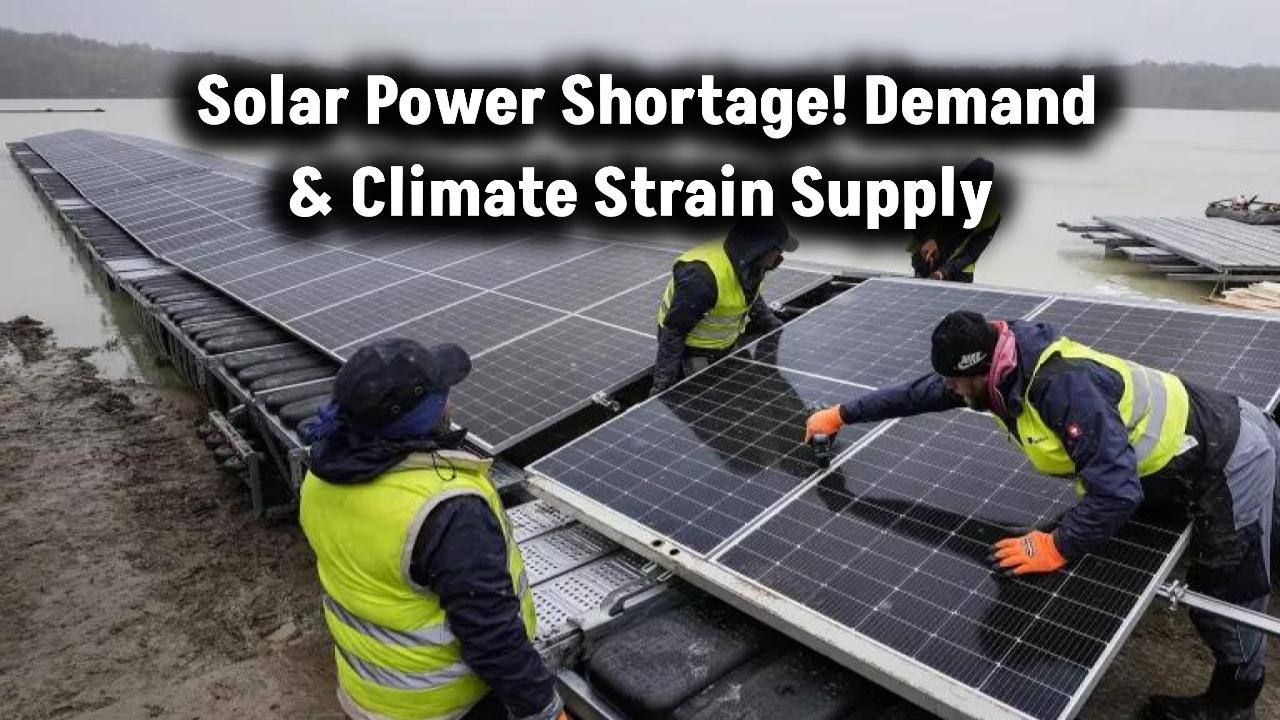
As we move further into the green energy revolution, solar energy continues to shine as one of the most promising investment sectors. With global initiatives pushing for net-zero carbon emissions and a growing demand for clean energy, solar stocks—even the low-cost ones—are becoming increasingly attractive. If you’re an investor on a budget, you’re in luck. In this article, we’ll break down the top 5 solar stocks under $5 to buy in 2025, offering affordable entry points with serious growth potential.
Whether you’re a beginner investor or a seasoned pro looking for undervalued opportunities, these budget-friendly solar picks could be the golden ticket to a greener and wealthier future.
Why Solar Stocks Under $5 Are Worth Considering in 2025
Let’s face it—solar energy is no longer just the future; it’s the now. The International Energy Agency (IEA) projects that solar will become the largest source of electricity generation by 2050. And with nations committing trillions to clean energy transitions, even small players can hit it big.
Here’s the kicker: many of these low-priced solar stocks are small-cap companies, which means they’re riskier but can offer outsized returns. Think of them as the penny stocks of the green revolution—inexpensive now, but possibly the next breakout stars.
1. Sunworks, Inc. (NASDAQ: SUNW)
Price: Around $0.80–$1.20
Sector: Residential and commercial solar energy systems
Headquarters: California, USA
Why It Stands Out:
Sunworks designs and installs solar energy and battery storage systems for homeowners, agriculture, commercial buildings, and municipalities. The company recently merged with Solcius, expanding its footprint nationwide.
What Makes It Special?
- Increased adoption of residential solar systems in the U.S.
- Federal tax credits like the Investment Tax Credit (ITC) extended through 2032, boosting demand.
- Its focus on battery storage makes it a dual-play in clean energy.
2. SPI Energy Co., Ltd. (NASDAQ: SPI)
Price: ~$0.77
Sector: Solar + Electric Vehicle Charging Infrastructure
Headquarters: Santa Clara, California (U.S.) + Global operations
Why It Stands Out:
SPI is not just a solar play—it’s a hybrid of clean energy and EV infrastructure. The company develops solar PV systems globally and also manufactures EVs through its Phoenix Motor subsidiary.
Key Growth Drivers:
- Diversification into EVs adds multiple revenue streams.
- Strategic partnerships in Europe and Asia.
- A long-term bet on EV + solar integration.
3. Solar Integrated Roofing Corp. (OTCMKTS: SIRC)
Price: Generally under $1
Sector: Integrated solar + roofing systems
Headquarters: California, USA
Why It Stands Out:
SIRC is a one-stop shop for solar, battery storage, and roofing solutions. It targets both residential and commercial customers. Through acquisitions like Cornerstone Construction, it’s aggressively growing its footprint.
What to Love:
- Cross-selling roofing and solar gives SIRC a unique market advantage.
- Federal and state incentives push customers toward full home energy upgrades.
- It recently entered the EV charging installation market.
4. VivoPower International PLC (NASDAQ: VVPR)
Price: Typically below $5
Sector: Renewable Energy Solutions (Solar, EVs, Batteries)
Headquarters: London, UK
Why It Stands Out:
VivoPower is a diversified energy company that goes beyond just solar. It provides turnkey sustainable energy solutions, including EV conversions for commercial fleets via its subsidiary, Tembo.
Investment Merits:
- Exposure to multiple fast-growing sectors: solar, EV, battery storage.
- Contract wins with African and European governments for fleet electrification.
- Clean energy consulting services boost B2B growth.
5. SunHydrogen, Inc. (OTCMKTS: HYSR)
Price: Under $0.10
Sector: Hydrogen energy from solar
Headquarters: Santa Barbara, California
Why It Stands Out:
SunHydrogen is developing a solar-based hydrogen production technology that mimics photosynthesis—literally splitting water molecules using sunlight. This could revolutionize clean hydrogen production.
Why It’s a Hidden Gem:
- Hydrogen is projected to be a $500 billion+ market by 2050.
- SunHydrogen owns several patents, giving it a technical edge.
- If successful, this tech could be adopted globally as a clean fuel source.
Things to Keep in Mind Before You Invest
While the idea of snagging solar stocks for under $5 is enticing, don’t forget that penny stocks are volatile. Many are still in early stages of development or rely heavily on future government contracts and subsidies.
Practical Tips:
- Do Your Research: Read company filings on SEC.gov, check earnings reports, and monitor news updates.
- Diversify: Don’t put all your money into one penny stock. Spread it across multiple sectors or companies.
- Be Patient: These are long-term bets. It may take 2–5 years to see significant growth, especially with R&D-heavy companies like HYSR.
Is the Solar Bubble Bursting or a Buy-the-Dip Opportunity?
Should You Buy First Solar or Enphase Energy? Side-by-Side Comparison
How Green Energy Policies in Europe Are Fueling Solar Stock Growth
(FAQs)
Q1. Are solar stocks under $5 safe investments?
No investment is 100% safe, especially penny stocks. These solar stocks have high potential but also high risk, so due diligence is crucial.
Q2. Can I buy these stocks on regular trading platforms like Robinhood or Zerodha?
Yes, most of these are listed on NASDAQ or OTCMKTS and are available on popular brokerage apps like Robinhood, Webull, Zerodha (India via foreign brokerage), and others.
Q3. How do government policies affect these companies?
Policies such as the Investment Tax Credit (ITC), subsidies, and the U.S. Inflation Reduction Act significantly impact solar demand and company revenue.
Q4. Should I consider dividend yield while buying solar penny stocks?
Not really. These companies reinvest profits into growth and rarely pay dividends. They’re best for capital appreciation, not passive income.
Q5. What’s the growth outlook for solar in general?
According to BloombergNEF, solar is projected to contribute over 35% of global electricity by 2050, with annual investments crossing $300 billion by 2030.








